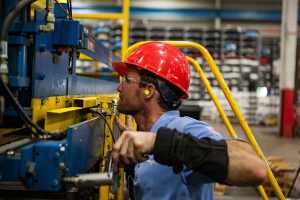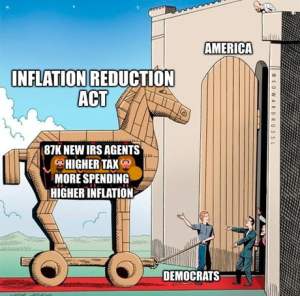I have already criticized the March jobs report released by the Bureau of Labor and Statistics. The mainstream media is cheering the 303,000 position boost as proof that the American economy is on the right path. I noted in an earlier blog post that the number of part-time workers rose by 691,000 while the number of full-time workers decreased by 6,000. The Bureau of Labor and Statistics admitted that the number of Americans holding multiple jobs increased by 217,000 or 5.2%, as Americans cannot afford the current cost of living even with wages rising 4.1% YoY.
One additional aspect—not a single manufacturing job was added to the US economy in March. The BLS claims that manufacturing jobs held steady at 12,956,000 from February, although 10,000 manufacturing positions were cut in January.
The Inflation Reduction Act promised to fund the Infrastructure Investment and Jobs Act that was intended to expand American manufacturing. As Yellen and others have openly stated, the Inflation Reduction Act, America’s most expensive spending package, was intended to promote the climate change agenda.
Clean energy manufacturing is not profitable and, therefore, not expanding. “According to third-party estimates, the Inflation Reduction Act’s climate and clean energy tax incentives have the potential to drive investment that will support more than 1 million jobs in energy and related manufacturing sectors over the coming decade,” the US Department of Treasury stated in October 2023.
“To receive increased credit and deduction amounts under the Inflation Reduction Act, taxpayers must:
- Pay workers the local prevailing wage, defined in accordance with Department of Labor standards, for work on facility construction, as well as for alterations and repairs in a five-to-twelve-year period, depending on the credit, after a facility is placed in service.
- Hire a sufficient proportion of workers from registered apprenticeship programs, including hiring these qualified apprentices for at least 10% of the labor hours spent on facility construction, alteration, or repair work (rising to 12.5% for facilities where construction begins in 2023 and 15% in 2024 and later years)
The prevailing wage and apprenticeship provisions apply to:
- the Alternative Fuel Refueling Property Credit (30C)
- the Production Tax Credit (45, 45Y)
- the Credit for Carbon Oxide Sequestration (45Q)
- the Credit for Production of Clean Hydrogen (45V)
- the Clean Fuel Production Credit (45Z)
- the Investment Tax Credit (48, 48E)
- the Advanced Energy Project Credit (48C)
- the Energy Efficient Commercial Buildings Deduction (179D)
In addition, the prevailing wage provision will apply to:
- the New Energy Efficient Home Credit (45L)
- the Zero-Emission Nuclear Power Production Credit (45U)”
The private sector does not wish to invest in alternative or renewable energy projects. The tax credits are not enough of an incentive. The US Department of the Treasury mistakenly believed that the act would provide “taxpayers with a strong incentive to meet high labor standards as they build projects” and “expand well-paying union jobs and support proven pathways into the industry that allow workers to earn while they learn.”
Manufacturing is in fact not expanding. The regulations in place have made it difficult for existing factories to expand or bring on more workers.











